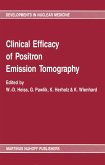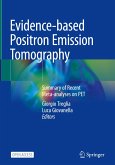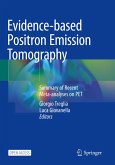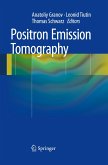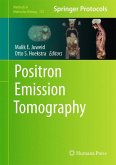This book provides a contemporary reference to the science, technology and clinical applications of PET and PET/CT. The book is designed to be used by residents and fellows training in medical imaging specialties as well as imaging experts in private or academic practice who need to become familiar with this technology and its applications. It is also for use by those whose specialties carry over to PET and PET/CT, referring physicians such as oncologists, cardiologists, neurologists and surgeons. Developed as an offshoot/update of the "clinical practice" portion of the main book, edited by PE Valk et al, published in 2003 (Positron Emission Tomography: basic science and clinical practice), this offshoot covers the second half of the main book only, dealing with mainly the clinical research and practice. Most of the book comprises chapters updated from the "Clinical practice" portion of the main Valk book. It contains 6 brand new chapters and 22 completely revised and updated chapters from the main Valk book.
The use of positron emission tomography (PET) in clinical practice is key to the s- cessful management of many patients with a wide variety of diseases. Whereas in the 1980s and 1990s nuclear medicine physicians struggled to convince other doctors about the potential clinical value of PET, it is now a challenge to keep up with the requests of our clinical colleagues for the various applications of PET. In fact, in most cases the barriers are now related to reimbursement for a given PET procedure. At the time this foreword was written, many FDG/PET procedures are reimbursable, and the U.S. National PET Registry, which is about to be implemented, will allow FDG/PET imaging data to accumulate on rare tumors, while allowing for Center for Medicare and Medicaid Services (CMS) reimbursement. The challenges are now shifting toward solving some of the limitations of FDG/PET through the use of next generation inst- mentation and newer tracers that hold the promise of improving on what is already a remarkable achievement with FDG/PET. It is my hope that there will in fact be an enormous growth of nuclear medicine driven by new imaging tracers that will fuel a growing number of clinical applications.
The use of positron emission tomography (PET) in clinical practice is key to the s- cessful management of many patients with a wide variety of diseases. Whereas in the 1980s and 1990s nuclear medicine physicians struggled to convince other doctors about the potential clinical value of PET, it is now a challenge to keep up with the requests of our clinical colleagues for the various applications of PET. In fact, in most cases the barriers are now related to reimbursement for a given PET procedure. At the time this foreword was written, many FDG/PET procedures are reimbursable, and the U.S. National PET Registry, which is about to be implemented, will allow FDG/PET imaging data to accumulate on rare tumors, while allowing for Center for Medicare and Medicaid Services (CMS) reimbursement. The challenges are now shifting toward solving some of the limitations of FDG/PET through the use of next generation inst- mentation and newer tracers that hold the promise of improving on what is already a remarkable achievement with FDG/PET. It is my hope that there will in fact be an enormous growth of nuclear medicine driven by new imaging tracers that will fuel a growing number of clinical applications.


